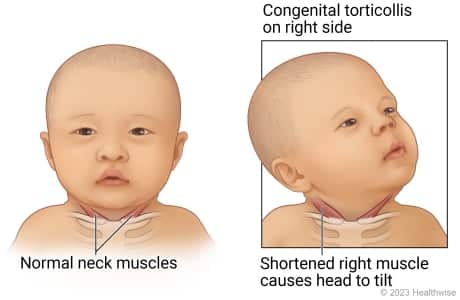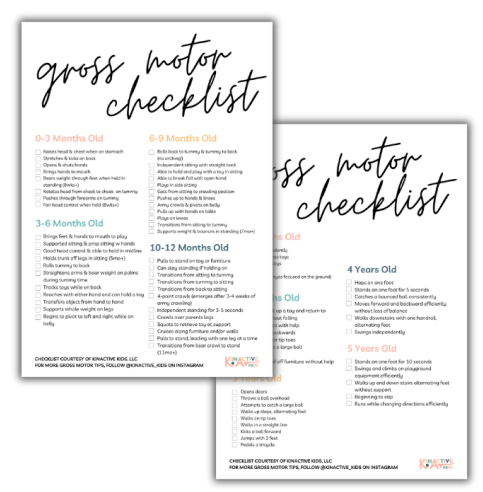How and When to Start Tummy Time (And Why It Matters!)

Why Does Tummy Time Matter For An Infant?
Before diving into the “how” and “when,” it’s important to understand the “why.” Tummy time offers a surprising number of advantages for your infant:
Strengthens the Core:
Tummy time gives the neck, back, shoulder, and arm muscles a real workout. These muscles are the building blocks for important milestones like head control, rolling over, crawling, and eventually sitting and standing. By strengthening these core muscles, tummy time helps pave the way for smooth and successful development.
Builds a Solid Foundation:
A strong core isn’t just about impressive feats; it’s essential for good posture, balance, and overall coordination. Tummy time helps develop this core strength, which will benefit your child throughout their life, from navigating playgrounds to participating in sports.
Enhance Gross Motor Skills:
Crawling, anyone? Tummy time is a fundamental stepping stone in developing gross motor skills. As your baby strengthens their neck and pushes up on their arms, they’ll eventually be able to prop themselves up and explore the world on a whole new level. Tummy time helps prepare them for this exciting transition.

Prevents Flat Head Syndrome:
Spending too much time in one position, particularly on their backs, can increase a baby’s risk of plagiocephaly, or flat head syndrome. Tummy time encourages your infant to turn their head and look around, which helps prevent this condition from developing.

Combating Torticollis:
If your baby has torticollis, which limits their head movement due to tight neck muscles, tummy time can be a valuable tool in their physical therapy treatment plan. By encouraging them to lift their head and explore their surroundings during tummy time, these muscles are gently stretched and strengthened, improving head mobility.

When Should A Parent Start Tummy Time?
The good news is that you can start tummy time early in your infant’s life! In fact, some experts recommend starting as early as a day or two after they come home from the hospital. Of course, newborns won’t have much head and neck control initially, so start with short sessions, just a few minutes at a time. Gradually increase the duration as your baby gets stronger.
Timeline to keep in mind when starting tummy time.
- Newborns (1-3 Months): Start with short bursts (2-3 minutes) several times daily. Place your baby on a firm, flat surface and interact with them to keep them engaged.
- Infants (4-7 Months): Aim for longer sessions (10-15 minutes) throughout the day as your baby gains strength. Tummy time can become a fun part of your baby’s playtime routine.
Remember: Every baby develops at their own pace. If you have concerns about your infant’s development or their ability to tolerate tummy time, always consult your pediatrician.
How Should I Introduce My Child To Tummy Time?
Introducing tummy time can be a gradual process, especially for newborns. Here are some tips to make it a positive experience:
- Start Short and Sweet: Begin with just a few minutes at a time, a couple of times a day. Gradually increase the duration as your baby gets stronger and more comfortable.
- Find the Right Surface: Use a firm, flat surface like a play mat or a blanket on the floor. Avoid placing your baby on soft surfaces like pillows or couches, as this can hinder their ability to move and engage their core muscles.
- Support and Soothe: For newborns, offer gentle support by placing a rolled-up
When Should I Be Concerned If My Child Is Struggling With Tummy Time?
While some fussiness during tummy time is normal, especially for younger babies, some signs might indicate a need to consult with your pediatrician:
- Extreme fussiness or crying: If your baby cries excessively and seems inconsolable during tummy time, it could be a sign of discomfort or underlying issues.
- Delayed milestones: If your baby isn’t meeting typical developmental milestones for head control, rolling over, or reaching, discuss this with your pediatrician. Tummy time struggles can sometimes be a symptom of a larger developmental delay.
- Lack of interest in lifting their head: By around 3 months old, most
What Happens If I Never Do Tummy Time With My Child?
Skipping tummy time can lead to a complete delay in development. As we mentioned earlier, this activity is one of the best ways to build muscles throughout the body. The core and neck are vital to sitting up, crawling, and eventually, walking. Allowing your little one to skip this development can delay the entire process. Even if your infant goes straight to sitting up, I still highly recommend forcing some tummy time.
Let’s not forget that if tummy time can help prevent flat heads and torticollis, a lack of it can also increase your kiddo’s chances of getting them! If you think your little one is frustrated by tummy time, just wait until they have neck pain or need to wear a helmet to reshape their head!
At the end of the day, tummy time is clearly important. Ensure you carve out some time to get your little developing correctly and keep it up for roughly six months or until they start rolling on their own.
What To Do If Your Child Hates Tummy Time:
“But Emily, what if my little HATES tummy time?” That’s a great question – and honestly, not all that rare. This activity can be uncomfortable, so most kiddos don’t enjoy it initially.
Here are my recommendations for getting your kiddo into the swing of tummy time.
- Using toys (light up or with sound) is fantastic for keeping infants’ interest during tummy time.
- Try shorter time periods but increase the frequency during the day. While I typically recommend the 10-minute interval (or more depending on the month) two to three times a day, if your little one hates tummy time, try doing five minutes four times a day. It’s extremely important we don’t neglect tummy time simply because our littles get fussy about it.
Exercises For Parents To Try (By Age Range) When Starting Tummy Time.
As a reminder, I wouldn’t typically suggest going to an older age bracket exercise, but you can definitely still work on younger age-ranged exercises if your kiddo needs it! And, of course, these are not personalized recommendations. You may want to double-check with me or another physical therapist/doctor on what would be best for your specific child.
Birth – 4 weeks
Work with your little ones to help them lift their heads. Rotate their faces on the ground from cheek to cheek. As this typically works best closer to the 6-week range, be sure you are gentle and attentive to their breathing ability. Never let your little ones put their mouths down on the ground.
6 weeks and up
Use side-lying play to help your kiddo play with a toy in the midline. I love doing this in front of a mirror with a poppy placed behind their back to keep them in the side-lying position.
8 weeks and up – Superman!
A little more fun; it’s time for a hero! Hold your kiddo in the Superman position (arms and legs stretched out like they’re flying). This will help your child strengthen their neck and trunk, preparing them to start sitting and looking around.
Along the same lines, you can simply hold your little face away from you and coo at them. This will cause them to turn their heads as they try to find you, building that neck strength.
Three months – Baby sit-ups
Get your little one in the gym because it’s time to start grinding! Okay, that’s just a joke – don’t go too hard yet. However, your little one can definitely start doing some baby sit-ups, which are great for head control.
Pull your little one up to a sitting position roughly 5 to 10 times. If the head lags significantly, place your child on your lap and pull up using two fingers on the back of their shoulders. If they actually have decent head control, gently pull them into a seat (2 months and up) using their hands instead of the back of their shoulders. Then, wait until their head initiates a tuck before coming to sitting. If you want to watch me demonstrate, head to the Torticollis blog, where I have a great video of the baby sit-up.
*You can also start working on these around 8 weeks, but I typically recommend waiting a little longer.
4 months and up – Baby planks
We’re not quite full on pushups yet, but baby planks will help out your little’s core. Lay your kiddo across your legs, with their belly button placed in the middle of your thigh or even on a rolled-up towel. Place a stationary toy at eye level and encourage reaching to touch the toy. These planks will, as mentioned, build core/trunk strength and help as they work on sitting.
Tips for Making Tummy Time Fun
Here are some ways to make tummy time an enjoyable experience for both you and your baby:
- Get down on their level: Interact with them using toys, rattles, or mirrors. Talk to them in a soothing voice and sing songs.
- Change up the scenery: Tummy time doesn’t have to happen on the floor. Try placing your baby on a play mat or a soft blanket.
- Make it a routine: Integrate tummy time into your baby’s daily routine. This will help them get used to it and may even make them look forward to it.
By incorporating tummy time into your infant’s daily routine, you’re helping them build a strong foundation for a lifetime of healthy movement and exploration. So get down on the floor, have some fun, and watch your little one blossom! For more help with gross motor development, follow us on Instagram.


